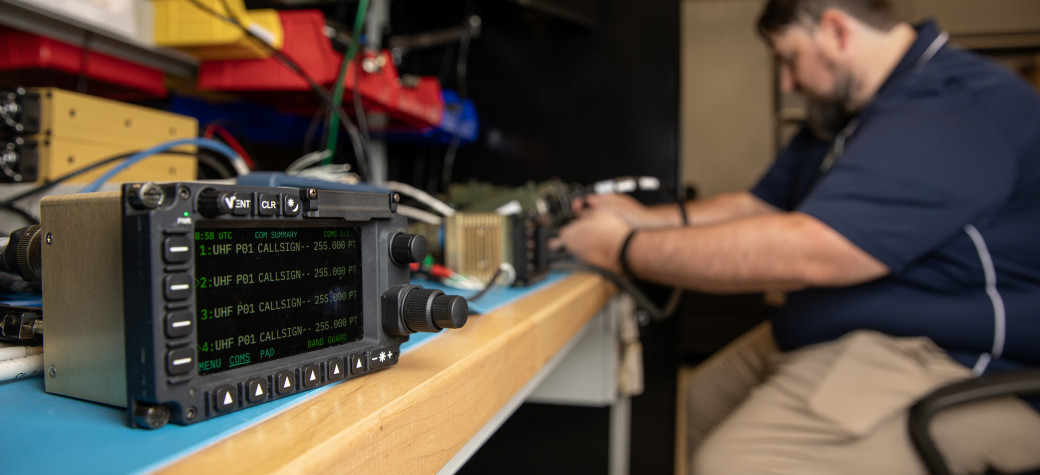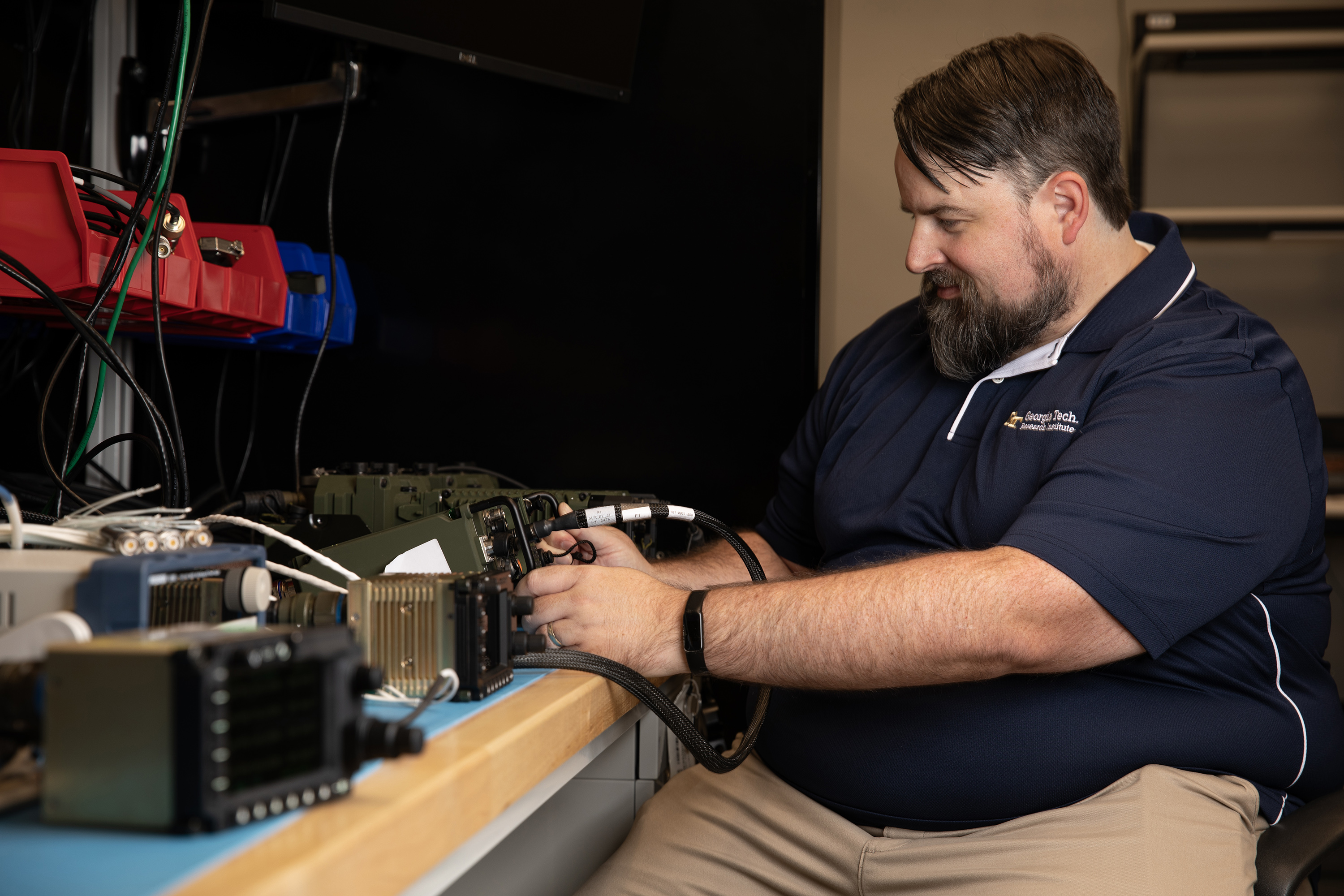
Using a model-based systems engineering (MBSE) approach, researchers from the Georgia Tech Research Institute (GTRI) are developing the software necessary to integrate new control, radio, and cryptographic capabilities into UH-60M Black Hawk helicopters, which are mainstays of the U.S. Army’s helicopter fleet.

The Aviation Radio Control Manager (ARCM) software will enable the sustainment of enduring fleet aircraft by employing a Modular Open Systems Approach (MOSA) to replace obsolete, out-of-production radio equipment and set the stage for future communications suite enhancements. The reusable and adaptable ARCM software is projected to be employed on additional Army aircraft in the future, providing benefits of software reuse, potentially leveraged for future efforts.
Now in its third round of software development, ARCM is due to be flight-tested next summer and installed on the first group of UH-60M aircraft in 2025. The project, supported by the U.S. Army’s PEO Aviation in Huntsville, Alabama, will comply with the service’s Future Airborne Capability Environment®, also known as FACE®, Technical Standard, Edition 3.1.
Model-based approaches are being used across the Department of Defense (DoD) to accelerate the development of new platforms and updates to existing ones. Beyond reducing costs and getting new capabilities to warfighters more quickly, the process can streamline procurement by clearly spelling out system specifications and key interfaces.
“Model-based approaches have been a very central part of how we’ve approached ARCM, and the return on investment for ARCM generally and for the MBSEs specifically, is based largely on a business case in which you spend a little more to get the models in place and design the system to interface with multiple components,” said Scott Tompkins, a GTRI senior research engineer who leads the project. “Investments in MBSE can provide huge savings when you reuse the work for other systems and shorten the cycle times to bring new capabilities to aircraft platforms.”
In this first application, the ARCM software will facilitate three major improvements for the UH-60M: (1) replacement of the control head unit (CHU) that aircrews use to operate radio equipment, (2) replacement of an obsolete tactical communications radio, and (3) upgrade of cryptographic systems used for secure communications. The replacement radio hardware, which is being built by multiple vendors, interfaces with the aircraft’s unmodified flight management system (FMS) via the ARCM.
“The aircraft needed a new radio, but the Army doesn’t necessarily desire to change the approved and fielded Black Hawk FMS Operational Flight Program (OFP) to integrate that radio,” Tompkins said. “In this project, we are translating the radio’s interface, so they don’t have to change the main aircraft software. This will address three issues at once through software.”
Two different radios with comparable functionality will be available as options for replacing the existing ARC-201D unit. The ARCM software will make the difference between those two alternatives invisible to aircrews and other systems in the aircraft. The software will also allow transparent substitution of radio equipment on Black Hawks used by foreign nations, and it is designed for future support of alternate radio equipment used by National Guard Black Hawks for collaboration with civil defense and domestic first responder agencies.
“From the models, we generated the vast majority of the code used in the ARCM, and that code meets the FACE ® Edition 3.1 standard for MOSA software,” Tompkins said. “We have also deployed a development, security, and operations (DevSecOps) pipeline to support our software repository and perform automated testing of the products as part of best practices in software development and acquisition. We are also doing full end-to-end information assurance accreditation.”
Though only the UH-60M work has been performed so far, the work done on ARCM could also be used with CH-47F Chinook and AH-64 Apache helicopters, as well as the Gray Eagle uncrewed aircraft system (UAS). The Army’s Future Vertical Lift (FVL) platforms could also take advantage of the modeling done for ARCM.
“The FACE ® model provides the ability to unambiguously communicate about interfaces,” Tompkins said. “We have all the contextual meaning for the data so that when we hand this over, there’s no question about what the data is and how to interpret the messages. We have captured all of that in the model.”
Beyond ensuring compatibility with existing Black Hawk systems, GTRI is also making sure the replacement interface – graphics and buttons that control the radio equipment – makes sense to the aircrews that will use it. “We recently completed another round of crew station working group meetings where we had pilots review our graphical user interface (GUI) and the functionality,” said Tompkins. “It was very encouraging, and we continue to get positive user feedback.”
GTRI is scheduled to deliver its full technical data package (TDP) to the Army in January 2024. The ARCM program will submit the software and its associated development artifacts to the Army for an airworthiness qualification to a DO-178C Design Assurance Level ‘C’ level of rigor in Q3 of fiscal year 2024. It will then be reviewed for a first test flight in early summer of that year. Once flight testing is over, ARCM and the new hardware can begin rolling out to Army units in 2025.
GTRI expects to be part of the test flights and then move on to support the development of additional capabilities, including new waveforms being developed by the radio vendors. Discussions are also underway regarding potential applications to other Army rotorcraft.
“Our goal is to have an ARCM release annually that brings new capabilities,” Tompkins said. “With software-defined radios, the vendors are constantly innovating and improving waveforms. We want to get those enhancements out to aircrews as soon as possible.”
The ARCM program has involved multiple labs within GTRI, as well as Tucson Embedded Systems, which is a FACE ® Verification Authority.
“We have put together a great multidisciplinary team of modelers, software developers, information assurance experts, human factors specialists, and human systems engineers,” Tompkins said. “It’s been a spectacular project – working with a wonderful team – and I’m really excited to see the first test flight.”
DISCLAIMER: This article contains views and opinions that are not official U.S. Army positions.
Writer: John Toon (john.toon@gtri.gatech.edu)
GTRI Communications
Georgia Tech Research Institute
Atlanta, Georgia
The Georgia Tech Research Institute (GTRI) is the nonprofit, applied research division of the Georgia Institute of Technology (Georgia Tech). Founded in 1934 as the Engineering Experiment Station, GTRI has grown to more than 2,900 employees, supporting eight laboratories in over 20 locations around the country and performing more than $940 million of problem-solving research annually for government and industry. GTRI's renowned researchers combine science, engineering, economics, policy, and technical expertise to solve complex problems for the U.S. federal government, state, and industry.



